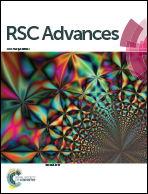Raman spectroscopy-based label-free cell identification using wavelet transform and support vector machine
Abstract
Wavelet transform is a powerful mathematical tool for signal processing. Its high capabilities including signal decomposition, compressing and de-noising make it useful for numerous applications, especially for processing weak signals such as in Raman spectra. Raman spectroscopy is a highly accurate and non-destructive method to identify materials, so it can be an appropriate mechanism for the analysis of circulating tumor cells (CTCs). In this paper we present a method comprising of Raman spectroscopy and wavelet transform to distinguish between different types of leukocytes and CTCs derived from breast cancer (MCF7). All types of leukocytes are isolated from the peripheral blood of healthy donors while CTCs are provided from cell cultures. All of the cells are dried on quartz discs. Raman spectra are collected from cells that are excited with a 785 nm laser. Wavelet transform is used for signal pre-processing such as background correction and signal de-noising. Then a discrete wavelet transform is used as a feature extraction tool. At the end of the process, support vector machine (SVM) is used to classify the spectra into two groups including leukocytes and CTCs. Distinguishing between the cells is achieved with an accuracy of more than 98.99%.


 Please wait while we load your content...
Please wait while we load your content...